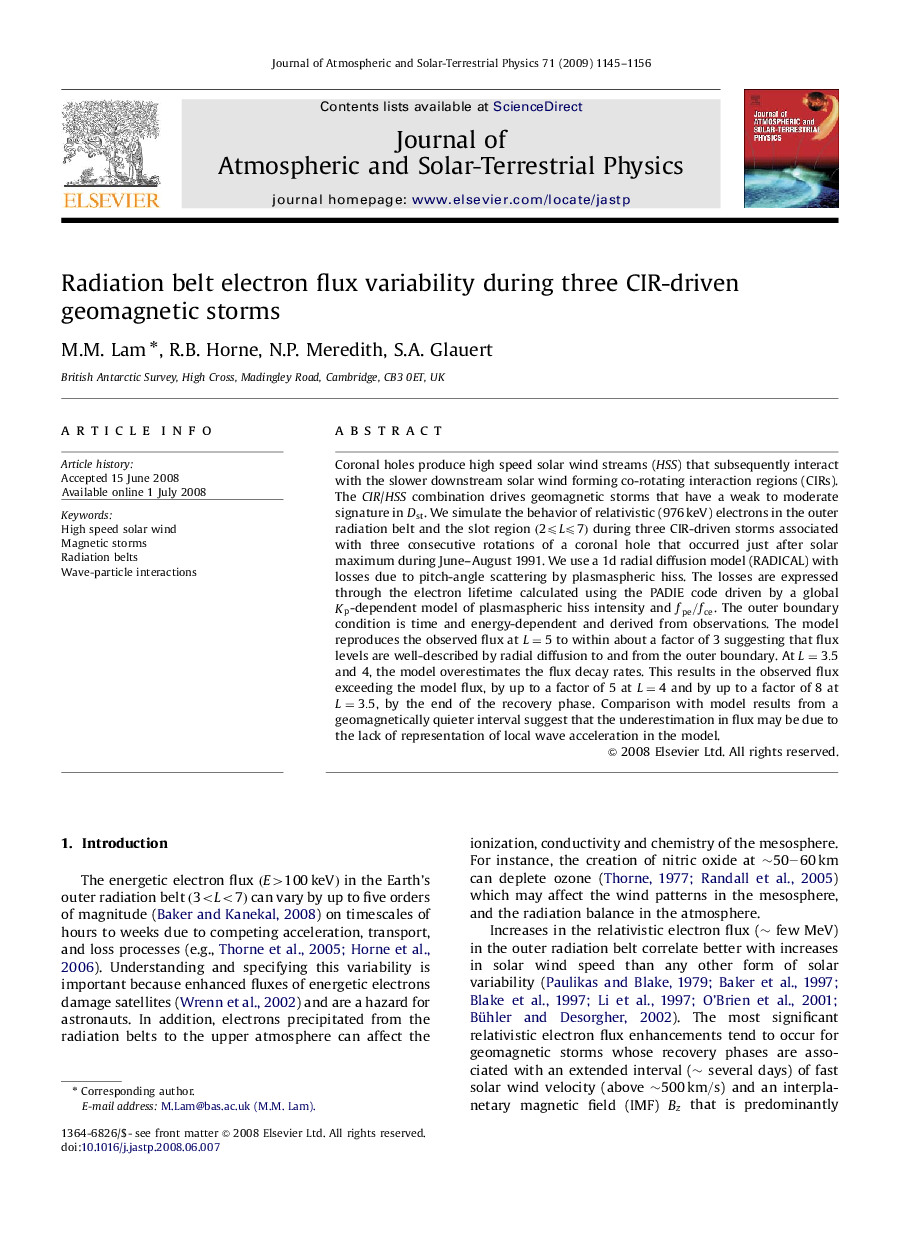| Article ID | Journal | Published Year | Pages | File Type |
|---|---|---|---|---|
| 1777491 | Journal of Atmospheric and Solar-Terrestrial Physics | 2009 | 12 Pages |
Coronal holes produce high speed solar wind streams (HSS) that subsequently interact with the slower downstream solar wind forming co-rotating interaction regions (CIRs). The CIR/HSS combination drives geomagnetic storms that have a weak to moderate signature in DstDst. We simulate the behavior of relativistic (976 keV) electrons in the outer radiation belt and the slot region (2⩽L⩽7)(2⩽L⩽7) during three CIR-driven storms associated with three consecutive rotations of a coronal hole that occurred just after solar maximum during June–August 1991. We use a 1d radial diffusion model (RADICAL) with losses due to pitch-angle scattering by plasmaspheric hiss. The losses are expressed through the electron lifetime calculated using the PADIE code driven by a global KpKp-dependent model of plasmaspheric hiss intensity and fpe/fcefpe/fce. The outer boundary condition is time and energy-dependent and derived from observations. The model reproduces the observed flux at L=5L=5 to within about a factor of 3 suggesting that flux levels are well-described by radial diffusion to and from the outer boundary. At L=3.5L=3.5 and 4, the model overestimates the flux decay rates. This results in the observed flux exceeding the model flux, by up to a factor of 5 at L=4L=4 and by up to a factor of 8 at L=3.5L=3.5, by the end of the recovery phase. Comparison with model results from a geomagnetically quieter interval suggest that the underestimation in flux may be due to the lack of representation of local wave acceleration in the model.
